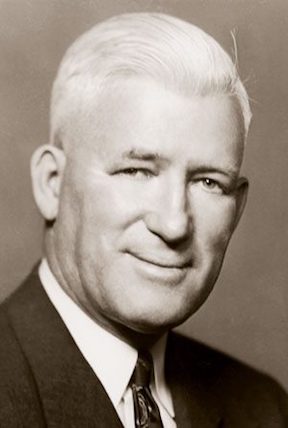Howard S. McDonald
Howard Stevenson McDonald was a college and university president. He was president of Brigham Young University from July 1945 to October 1949.
In 1924, then BYU president Franklin S. Harris asked him to come to BYU and head the engineering department. McDonald declined the offer, considering himself unqualified for the position. Instead, he continued his university studies while teaching high school. He held a master’s degree from the University of California, Berkeley, in 1925. He later completed his Doctorate of Education degree from the same university.
McDonald was vice principal and dean of boys at Balboa High School in 1928, director of personnel in the San Francisco School District from 1934 to 1936, and in 1937 became the superintendent of that school district. From 1944 to 1945, he was superintendent of schools in Salt Lake City, Utah.
- McDonald recalled, "About the first of March, 1945, President J. Reuben Clark of the First Presidency invited me to his office the following Saturday." McDonald "wondered all weekend about what in the sam hill he wanted me for." President McKay and President Clark had been highly impressed with McDonald's educational work, and President Grant approved their recommendation that McDonald be offered the presidency of BYU. McDonald's reaction to the appointment was mixed. While in California he had mentioned to Apostle George F. Richards that some day he would like to be President of Brigham Young University. But when the opportunity came, he hesitated. He explained his deficiencies to President Clark and then asked for a week to make a decision. With Clark's encouragement, he visited the Provo campus to talk extensively with the deans and members of the faculty. Finally McDonald told his wife, "We've been called by the First Presidency. Let's go and do it.”[1]
McDonald was selected because of his service as a stake president. The board of trustees thought he could bring a strong religious emphasis to BYU. Religious studies was an emphasis of his presidency. In 1949, the board of trustees approved a master of theology degree.
He recruited more professors, including Hugh Nibley, and over 80 professors were hired during his administration due to an increase in enrollment following World War II. He petitioned for their wages to be increased (after a salary cut during the Great Depression). He also initiated the construction of several new buildings.
He organized a student health plan in 1946, and the student health center was named after him. He called for more strict adherence to Word of Wisdom principles and to curfew. He also helped establish student branches for church meetings.
“His abrupt demands of the Board of Trustees sometimes created resistance because he was accustomed to a public school environment in which he as administrator made most of the decisions, and he had difficulty adjusting to a situation in which the Board of Trustees took an active part in the administration of the school.”[2] He was often at odds with the board of trustees and President J. Reuben Clark was unhappy with McDonald’s performance as president. With tension growing, McDonald left BYU in October 1949 and became president of Los Angeles City College and Los Angeles State College. He retired in 1962, after having grown the state system. He helped found San Fernando Valley State College in 1956 and served as president of the general faculty from 1956 to 1958. After his retirement he was appointed a regional representative of the U.S. Commissioner of Education, a position he held until 1964.
From 1964 to 1968, he served as president of the Church’s Salt Lake Temple.
McDonald was born on July 18, 1894, in Holladay, Utah. He died on October 25, 1986, in Los Alamitos, California. He and his wife, Ella, had two daughters.
